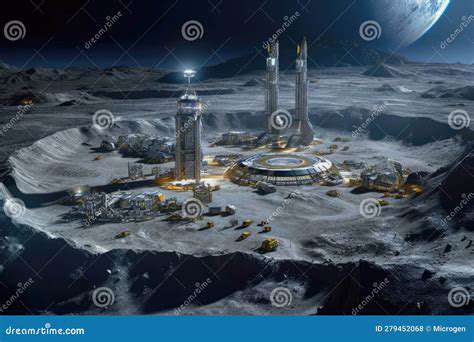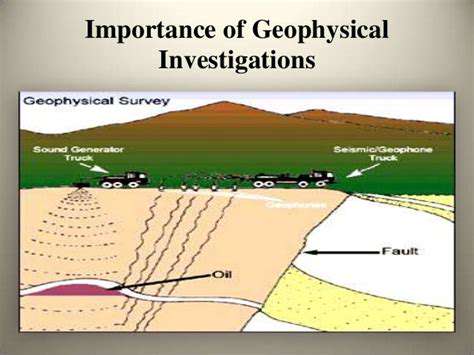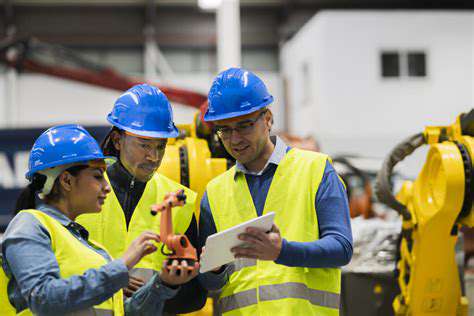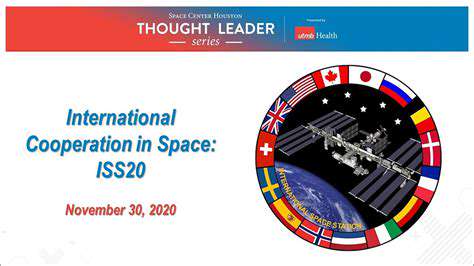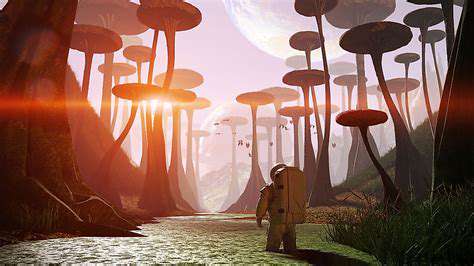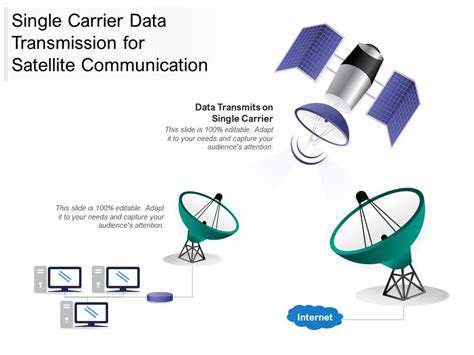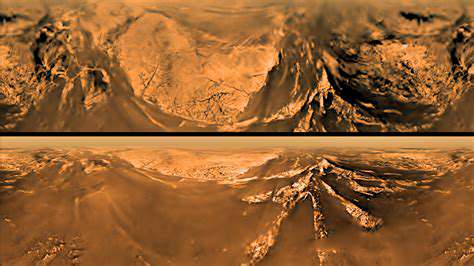Technological Innovations Powering the Mission
Hayabusa2's operational success hinged on several groundbreaking systems that redefined small-body exploration. The spacecraft's optical navigation array allowed centimeter-level positioning accuracy despite the asteroid's negligible gravity - equivalent to threading a needle while both the needle and thread float independently. The sampling mechanism's elegant design enabled subsurface material collection without traditional drilling, using an ingenious projectile system to disturb pristine layers untouched by space weathering.
Communication specialists developed novel data compression algorithms to maximize scientific return from the limited bandwidth available across interplanetary distances. The spacecraft's power management system balanced solar array orientation with instrument usage and thermal control in an intricate dance that sustained operations for years beyond the original mission timeline. These technological triumphs didn't emerge fully formed - each represented countless iterations, terrestrial testing, and contingency planning to address the unpredictable nature of asteroid exploration.
Ryugu: A Primordial Scientific Treasure
The target asteroid Ryugu surprised researchers with its rubble pile structure - a loose aggregation of cosmic debris held together by weak gravitational forces. Spectral analysis revealed hydrated minerals and organic compounds dating back 4.6 billion years, making it a veritable museum of solar system formation. Ryugu's dark surface, reflecting only about 2% of incident sunlight, presented unique observational challenges that spurred innovation in the mission's imaging systems.
Planetary geologists identified remarkable surface features including large boulders, impact craters, and mysterious bright spots that hinted at compositional variations. The equatorial ridge suggested the asteroid might have experienced rapid rotation in its past, possibly reshaping its structure through centrifugal forces. These discoveries transformed Ryugu from a simple sampling target into a dynamic world with a complex geological history waiting to be deciphered.
The Sample Return and Scientific Legacy
The culmination of Hayabusa2's six-year journey came with the dramatic return capsule descent over the Australian outback. This marked humanity's first successful retrieval of subsurface material from an asteroid, containing potentially pristine organic compounds shielded from solar radiation for eons. Meticulous curation procedures at specialized facilities ensured these precious grains remained uncontaminated for generations of researchers.
Early analyses revealed amino acids and other prebiotic molecules, fueling speculation about asteroids' role in seeding Earth with life's building blocks. The samples' isotopic signatures provide a new reference point for understanding planetary formation, with implications reaching far beyond our solar system. Perhaps most significantly, Hayabusa2 demonstrated that complex sample return missions from small bodies are not just possible, but repeatable - opening new chapters in planetary exploration.
Navigating the Asteroid Ryugu
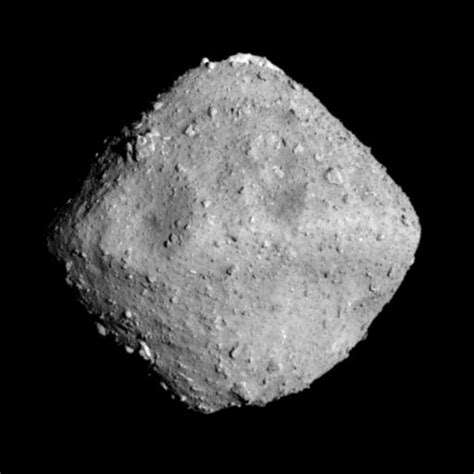
Initial Reconnaissance and Mapping
When Hayabusa2 arrived at Ryugu in June 2018, the spacecraft began an intensive observation campaign that would redefine our understanding of asteroid surfaces. Using its suite of scientific instruments, the probe constructed detailed three-dimensional models revealing Ryugu's surprising lack of fine regolith. The absence of expected dust deposits forced mission planners to completely rethink their sampling strategy mid-mission. Thermal imaging identified regions of varying density, while laser altimetry exposed subtle surface deformations hinting at internal structure.
These comprehensive surveys uncovered Ryugu's true nature as a spinning top asteroid, with an equatorial bulge suggesting past rapid rotation. The global mapping also revealed an unexpectedly diverse surface, with some areas appearing markedly younger than others based on crater counts. This geological complexity made site selection far more challenging than anticipated, requiring extended analysis before committing to landing zones.
Landing Site Selection Challenges
Choosing where to touch down became an international scientific debate, as engineers wrestled with Ryugu's treacherous terrain. The ideal site needed to balance scientific value against operational safety - requiring relatively flat areas at least 20 meters across with minimal surface obstacles. Mission planners eventually adopted an innovative target marker system, deploying reflective spheres to assist the spacecraft's autonomous landing systems.
After months of analysis, two primary sites emerged: one notably smoother region designated L08, and a more scientifically intriguing but riskier area called MASCOT's landing site. The team implemented exhaustive contingency plans, including multiple rehearsal descents to validate navigation software. This meticulous preparation proved crucial when the first touchdown attempt encountered unexpected surface reflectance properties, requiring last-second software patches uploaded across millions of kilometers of space.
The Touchdown Ballet
Hayabusa2's sampling maneuvers represented an unprecedented feat of robotic space operations. The spacecraft executed a carefully choreographed descent, using its sampler horn to contact the surface for mere seconds. The critical moment came when a 5-gram tantalum projectile fired into the asteroid's surface at 300 m/s, ejecting material into the collection chamber. This touch-and-go technique minimized disturbance while maximizing sample integrity.
Even more ambitious was the crater-generation operation, where Hayabusa2 deployed an impactor to expose subsurface material. The spacecraft first positioned itself on the asteroid's far side before releasing the explosive device, then used a deployable camera to document the resulting crater. This two-stage sampling approach provided both surface and subsurface specimens, offering scientists a vertical profile of Ryugu's composition.
Laboratory Revelations
Initial sample analysis at the Japan Aerospace Exploration Agency's curation facility revealed stunning diversity in the returned material. Some grains showed evidence of aqueous alteration, suggesting Ryugu's parent body once contained water ice. Early spectroscopic studies detected aromatic hydrocarbons and nitrogen-bearing compounds - potential precursors to biochemical molecules. The samples' porous structure matched telescopic observations of Ryugu's bulk density, confirming the asteroid's rubble-pile nature.
International research teams applied cutting-edge techniques like synchrotron radiation X-ray diffraction to analyze microscopic grains without damaging them. These non-destructive methods revealed mineral assemblages never before studied in asteroid samples, including unusual sulfide compounds. The painstaking work continues, with each new analysis potentially rewriting our understanding of early solar system chemistry.
Beyond the Mission Horizon
Hayabusa2's successful return marked just the beginning of its scientific legacy. The spacecraft itself, with remaining fuel and functioning instruments, received approval for an extended mission to asteroid 1998 KY26. This daring secondary objective will explore a fast-rotating, potentially metallic asteroid unlike any previously visited. The mission extension demonstrates how robust engineering can yield unexpected scientific dividends years after primary mission completion.
Meanwhile, laboratories worldwide continue analyzing Ryugu samples, with findings gradually reshaping planetary science textbooks. The mission's data archive serves as a treasure trove for future researchers, while its technological innovations influence mission designs for decades to come - from NASA's OSIRIS-REx to proposed comet sample return missions. Hayabusa2 proved that even the most ambitious interplanetary missions can exceed expectations when human ingenuity meets cosmic curiosity.
The Legacy of Hayabusa2

Redefining Sample Return Science
Hayabusa2's magnificent return of pristine asteroid material established new standards for extraterrestrial sample analysis. Unlike meteorites altered by atmospheric entry, these carefully curated specimens preserve delicate organic compounds unchanged since the solar system's birth. The discovery of intact amino acids like uracil in Ryugu samples provides compelling evidence that life's molecular precursors formed abundantly in space. Advanced isotopic analysis revealed nucleobase ratios distinct from terrestrial contamination, confirming their extraterrestrial origin.
The mission's sampling methodology - capturing both surface and subsurface material - created an unprecedented stratigraphic record of asteroid evolution. Researchers identified millimeter-sized melt splashes that record ancient impacts, while other grains show evidence of prolonged water-rock interactions. This diverse collection serves as a Rosetta Stone for interpreting remote observations of asteroids throughout the solar system.
Revolutionizing Small Body Exploration
Hayabusa2's operational innovations have become foundational for contemporary asteroid missions. The spacecraft's autonomous navigation system, capable of making real-time landing decisions without Earth intervention, represents a paradigm shift in deep space robotics. Mission engineers pioneered techniques for operating in ultra-low gravity environments that will inform future missions to comets and small moons. The successful deployment of multiple landers and rovers demonstrated the viability of distributed exploration architectures at small bodies.
The mission also advanced spacecraft self-sufficiency, with Hayabusa2 maintaining operations for years without traditional safe modes that plague more conservative designs. This reliability stemmed from redundant systems and intelligent fault protection that could isolate problems without ground intervention. These advances prove especially valuable for exploring distant targets where communication delays make real-time troubleshooting impossible.
Inspiring Future Generations
Beyond its scientific achievements, Hayabusa2 captured global imagination through innovative public engagement. The mission team shared raw images and data in near real-time, allowing citizen scientists to participate in discovery. Schoolchildren worldwide tracked the spacecraft's progress, while amateur astronomers contributed valuable observations supporting navigation operations. This unprecedented transparency built public support for planetary science and inspired countless students to pursue STEM careers.
The mission's cultural impact extended beyond science, influencing art, music, and literature. Ryugu's distinctive shape appeared in everything from anime to architecture, while mission engineers became unlikely media personalities. This broad engagement demonstrated space exploration's power to unite people across national and cultural boundaries in shared wonder at cosmic discovery.
Charting Future Exploration
Hayabusa2's triumphs have catalyzed a new era of asteroid exploration. Its proven technologies underpin upcoming missions like ESA's Hera and NASA's NEO Surveyor, while sample analysis techniques developed for Ryugu prepare scientists for Mars sample return. The mission demonstrated that asteroid resource assessment is technologically feasible, informing commercial space mining ventures.
Perhaps most significantly, Hayabusa2 proved that small bodies preserve critical records of planetary formation accessible with current technology. This realization has spurred development of even more ambitious missions - from comet nucleus sample returns to asteroid deflection tests. The spacecraft's extended mission to 1998 KY26 may uncover entirely new classes of asteroid materials, further expanding our understanding of solar system diversity. Hayabusa2's legacy ultimately lies in transforming asteroid science from speculative to systematic, paving the way for humanity's next great leap into the solar system.

